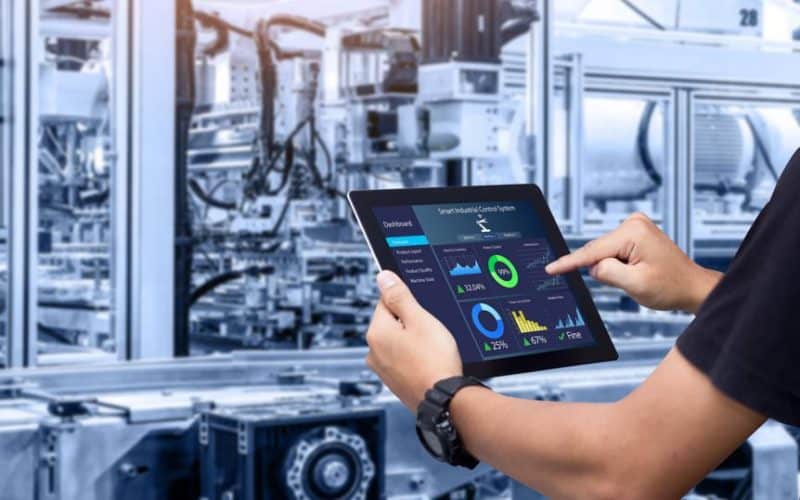Technology advancement typically coincides with business expansion. More money coming in implies more workers and more workers means more PCs, servers, and networks are needed. Larger businesses often bring formerly outsourced tasks in-house, such as human resources (HR), finance (FinTech), and accounting (Acquia, NetSuite, etc.), in an effort to cut costs without sacrificing quality or efficiency. Sooner or later, if your company is expanding, you’ll need to establish an IT asset management protocol for managing your hardware and software assets across their entire lifecycle.
This will allow you to do things like cut down on downtime, improve your financial forecasting, and lessen your exposure to risk. In addition, many organizations couldn’t function without their IT assets. IT asset management (ITAM) systems are useful for keeping tabs on hardware and software across an organization. We will take a look at some examples of IT asset management.
What is IT Asset Management?
IT asset management (ITAM) is the practice of keeping track of, deploying, maintaining, upgrading, and eventually getting rid of all of an organization’s IT assets. Basically, it’s keeping tabs on and making use of all the resources your business has to offer.
A common question is: “What exactly is an IT asset?” A company’s hardware, software, and/or data are all examples of IT asset management. The computers and software licenses used in the development, sale, and maintenance of Atlassian’s software and the servers on which it is hosted are among the department’s most prized possessions.
The useful life of IT assets is finite. The IT asset lifetime can be proactively managed to extract the most value for the business. Planning, procurement, deployment, maintenance, and retirement are all typical phases of this lifecycle, however, each company may define them differently. Understanding the total cost of ownership and optimizing asset use are crucial parts of IT asset management that necessitate the use of procedures across all lifecycle stages.
In the past, IT departments had complete authority over all resources under their purview. In modern businesses, asset management encompasses much more than just the IT-approved gear. New obstacles arise in IT asset management as a result of subscription-based software and the expectation of employees to personalize the tools and systems with which they work through marketplaces and app stores. IT departments, in order to support modern teams effectively, must be adaptable in how they manage their assets.
What Are the Types of It Asset Management?
Physical, digital, mobile, cloud, and software asset management are every type of IT asset management. Comprehensive IT asset management considers all the elements that make up an organization’s IT systems. It is helpful to have a thorough understanding of what is included in each classification of IT assets before deciding on an appropriate management strategy. Here’s a review of the main types of asset management in IT.
#1. Physical Asset Management
Management of information technology (IT) physical assets entails tracking and maintaining all IT-related hardware, software, and physical stock. Decisions about the hardware needed to run an organization’s information technology infrastructure fall within the purview of IT asset management. However, assessing the technical requirements of a project or organization, and then selecting inventory to meet those needs, is at the heart of any physical IT asset management plan. Finding new places to keep gadgets, checking to see if they are compatible with the company’s software, and ordering more hardware are all common tasks associated with managing physical assets.
Some examples of Physical IT asset management:
- Hard drives
- Routers
- Scanners
- Monitors
- Copiers
- Cables
- Modems
#2. Software Asset Management
The term “software asset management” is used to describe the process by which a company decides what software it will use and how it will be administered company-wide. Ensuring that all software in use by the organization is properly licensed and that all users have the necessary permissions is a crucial part of software IT asset management. The software is only installed on the allowed number of devices once the IT department reviews the licensing agreement for the product in question. Regularly installing drivers, checking for updates, and migrating data from obsolete programs to modern operating systems are all components of software asset management.
Some common examples of software assets are:
- Third-party software programs
- Software products for clients
- Internal business software applications
#3. Mobile Asset Management
An integral part of IT asset management is tracking how team members use mobile devices. It entails keeping tabs on how employees in the firm use their own smartphones, tablets, and other mobile devices to access the company’s internal network. In order to keep sensitive company information secure, a mobile asset management strategy should include guidelines for how employees should utilize their mobile devices. This can involve regulating the apps that workers are allowed to install on their smartphones, the security of their passwords, and the extent to which their employers can access data from such devices.
Some aspects of mobile asset management are as follows:
- Keeping a record of what kind of mobile device each employee has at any one time
- Putting office management apps on employee phones
- Putting restrictions on mobile access to corporate data
- Safeguarding Company Apps Using Passwords
#4. Digital Asset Management
The term “digital asset management” is used to describe the process of organizing digital files. Digital assets are the information you save in a database, whereas digital asset management strategies are the methods you use to organize that information. Also, databases are essential to the operations of IT departments, since they are used for everything from the processing of algorithms to the storage of organizational data to the analysis of data for forecasting purposes to the maintenance of websites and the running of programs. With effective digital asset management, you may arrange your data in a way that is accessible and useful to IT specialists.
Examples of prevalent forms of digital IT assets include:
- Spreadsheets
- Videos
- Financial details
- Photos
- Text files
- Customer Information
#5. Cloud Asset Management
Management of cloud assets is crucial for companies that store data on the cloud rather than on their own servers. Your IT staff will always have access to data and services hosted in the cloud if you take the time to manage the various components of cloud hosting. If you’re in charge of managing cloud services, you’ll need to take a look at the critical functions that the cloud performs for your business and make sure they’re all safe and running well. Since the cloud may host various storage, networking, and software applications, it is possible to integrate cloud asset management with digital asset management and software asset management.
Here are some of the cloud-based assets you can manage:
- Cloud security and compliance
- Web storage
- Metadata History
- Online servers
IT Asset Management Software
Software for IT asset management (ITAM) assists users in keeping track of their IT resources. IT asset management software is designed to do one thing, and do it well: keep track of all the digital, physical, and virtual assets of an organization. Contract, financial, and inventory risk management elements are common in IT asset management software. Asset tracking, hardware upkeep, software patches, and policy governance are just some of the many uses for these instruments in business. IT asset management software ensures all connections are authorized, appropriately formatted, and up to date to lessen the likelihood of security breaches. IT asset management software with real-time monitoring capabilities can detect new connections and notify administrators of possibly unauthorized hardware. In addition to the functions found in software asset management systems, many IT asset management platforms also perform physical and network inventories.
IT Asset Management Software Characteristics
Features found in most IT asset management software systems that help businesses maintain command of their IT infrastructure and keep tabs on their hardware and software both locally and in the cloud include the following.
- License management: IT licenses are kept in IT asset management software. This information is then compared with the inventory records to warn the company whether it is either under-licensed, putting it at risk of breaking its license agreement, or over-licensed, causing it to spend money on software it will never use. In addition, this feature can also monitor when license agreements expire and notify the business in advance.
- Managing software versions and updates: The goal of asset management software is to maintain an organization’s computers secure, up-to-date, and functioning optimally by tracking the deployment of new software patches and versions.
- Robotic monitoring: The majority of IT asset management solutions can instantly identify every piece of hardware and piece of software on a company’s computer network.
- Database for managing configurations, or CMDB: The CMDB, or Configuration Management Database, is a repository for data pertaining to an organization’s IT assets and the connections between those assets.
- Fixed asset management: A fixed-assets database is a core feature of most IT asset management (ITAM) software packages. Hardware is typically considered a fixed asset.
Factors to Consider When Choosing ITAM Software or an Asset Management Solution
- Cost: After narrowing down the software options to those that can deliver on the company’s goals and objectives, it’s time to start comparing costs. It could be useful to know what features each package includes and what features it lacks. Before making a purchase decision, you may want to take advantage of a free trial period.
- Purpose: It’s important for a company to know exactly what it wants to get out of its investment in IT asset management software. Management should convene all relevant IT departments if at all practicable to solicit input.
- Technical support: Selecting a software vendor that provides round-the-clock technical support is crucial for businesses. Also, this assistance can be obtained via a variety of channels, including a self-service platform, a user community, in-app or web chat with a bot, phone support, and social media chat with a customer care agent.
What Are the Stages for IT Asset Management?
The proper preparation, acquisition, management, and upkeep of an organization’s information technology assets are essential to its day-to-day functioning, regardless of whether they are hosted in the cloud by software suppliers or on-premises systems.
Now let’s examine the stages of an IT asset’s management life cycle in more detail.
#1. Planning
An organization must have a strategy in place before investing in any information technology, software, or hardware. The first step is often simply becoming aware of a problem or a source of discomfort.
Finding an issue or set of problems to solve is the first step in the planning process. Perhaps an IT provider you’ve dealt with for a while is no longer providing adequate service. Perhaps you’re on the lookout for a new software vendor or partner in order to implement a new customer relationship management (CRM) system.
At the planning stage, you need to know:
- Which problems need fixing?
- Why would anyone want this fix? (For instance, internal customers, stakeholders, etc.)
- Is there a current setup in place, or would this be a brand-new investment?
- When exactly will this fix be required?
- What kind of return on investment (ROI) can we anticipate if the proposed solution effectively addresses the issue(s) which caused this purchase?
- How much money do we have to put toward finding an IT answer to this issue?
#2. Acquisition
The procurement process can begin once these questions have been answered.
It may be possible to sign up for a free trial of the software, determine if the team(s) utilizing this software are happy with it, and then deploy it for lower IT purchases (like a SaaS product under $200/month).
However, this procedure may take many months if a substantial IT purchase is being considered. Prior to making a purchase, it is necessary to settle on a budget, find vendors, solicit quotes, begin trial deployments, and evaluate the various providers and their solutions.
#3. Installation
You must coordinate with the supplier to integrate the purchased asset into your operations. It is possible that some staff training may be required to get everyone who will need to utilize the new software or hardware up to speed.
#4. Operation
Once an asset is fully implemented, it can begin serving its intended purpose, bringing about the desired changes in operations and profitability. IT asset management software should make it simpler to track the new asset’s long-term benefits.
You need to keep a close eye on how an asset is doing when it’s in deployment. Notify the provider of any issues, particularly those requiring maintenance.
#5. Maintenance
Hardware maintenance is usually handled differently than software maintenance. Maintenance is an ongoing cost for any piece of hardware, from machines to servers. However, the software also necessitates vendor-provided upkeep and upgrades. But software revisions don’t call for wrench-turning or new components.
Since there is no need for on-site maintenance or replacement parts throughout the life cycle of an IT asset, it is no surprise that many businesses are collaborating with suppliers to move as much as possible to cloud-based providers.
Repairs and upgrades are inherent aspects of the IT Asset Management life cycle because they are necessary for any hardware-based or mechanical system. It is important to verify what is and is not covered by a vendor’s warranty on a certain piece of equipment during the procurement phase. You should also inquire about the length of time that is allotted for the implementation of routine maintenance or upgrades that are part of the price or an annual service package. Also, read ASSET MANAGEMENT TOOLS.
This is especially important when the useful life of an IT asset approaches its end since it will help you avoid any unpleasant shocks down the line.
#6. Disposal
When an IT asset has reached the end of its useful life, it is retired from service and disposed of in one of three ways: reused, resold, or recycled. Most aren’t discarded like regular garbage because of stringent recycling legislation in many nations and jurisdictions, especially with regard to electronic waste.
When IT resources are hosted in the cloud and given by third-party developers, however, the situation is different. However, even such assets can eventually depreciate to zero. Either you find a new service provider or your current one improves their offering to make upgrades more appealing. Sometimes an organization decides it no longer requires a subscription to a certain software product because it is no longer needed.
Most IT assets, sooner or later, reach the end of their useful lifespan.
What Are the 5 Key Asset Types?
There are typically five main types of assets to examine when first getting started in the world of investing:
#1. Equities
A share of a publicly traded company’s ownership. Equities, which are stocks, are a popular term. Investors can buy into companies and become part-owners by purchasing shares of stock. The traditional stock market is where investors buy and sell stocks. Also, a shareholder may invest in a single company’s stock or in the stock of several companies.
An investor sees a rise in their capital when the price of a company’s stock rises. They have a right to any profits that are rightfully theirs upon the completion of the transaction. It’s up to the individual investor to decide whether or not to hold on to their current equity holdings. They may see a growth in the value of their investment over time.
Dividends are payments made by a corporation to stockholders from its profits on a regular schedule, usually once per month or quarter. In addition, dividends can be paid out in the form of either cash or shares.
#2. Fixed-Income Securities
Bonds are a type of set-income security in which investors lend money to a corporation or government agency in exchange for a fixed interest rate. An investor in a fixed-income instrument stands to gain from the possibility of future interest payments. Also, when a bond matures at a higher value, the investor receives a larger payoff.
Investments in fixed-income securities carry a low level of risk. In general, they provide steady returns with considerably less volatility than equities. Bonds issued by the government, certificates of deposit, and savings bonds are all types of fixed-income instruments. However, if a government agency needs money for something like a new water treatment facility or municipal infrastructure, it can issue bonds to the public.
#3. Cash Equivalents
Cash assets, often known as currency or medium of exchange, consist of liquid financial assets such as currency, short-term deposits, and cash. In other words, investors can swiftly turn their cash assets into cash or use them as cash, making liquidity an important feature of cash assets. Investors that often reevaluate their portfolios and reallocate assets to new investments or financial transactions may find this very useful.
A cash asset could be a short-term government bond. This bond has a substantially shorter maturity than conventional savings or government bonds, meaning it may be easier for an investor to convert into cash.
Another liquid asset is a treasury bill, which is a form of short-term debt having a maturity date within a year. A money market fund is another option for those seeking a cash equivalent. A money market fund functions similarly to a savings account in that money can be withdrawn rapidly but with the added benefit of often greater interest.
#4. Marketable Commodities
In the long run, investments in marketable commodities tend to pay off. Products with strong market demand can be bought by customers from vendors. Gold and silver are just two examples of precious metals that investors can put their money into on the stock market.
Copper, corn, crude oil, electricity, natural gas, and wheat are also other examples of tradable commodities. In addition, the value of such holdings can be kept high through the purchase and storage of commodities that are in demand. They may make a profit if they are able to sell their goods for more than they paid for them.
#5. Real Estate
Purchasing and investing in physical property are examples of real estate assets. Structures, land, and commercial real estate holdings all fit within this category. Restoring a vintage home and selling it on the open market again is an example of the kind of investment that might yield substantial gains.
Furthermore, property investors can also rent out their acquisitions to tenants for shorter terms. Those who don’t want to actually own any property can still profit from the real estate market by putting their money into real estate investment trusts, exchange-traded funds, or mutual funds.
What Are the Benefits of IT Asset Management?
All facets of a company’s operations can benefit from better IT asset management. Among the most significant advantages are the following:
#1. Improved Productivity
Without IT asset management, teams may waste time converting files, downloading multiple reader apps, transporting data between departments, and consolidating data. By ensuring that all team members have access to the same software and hardware, IT asset management boosts efficiency and productivity. Departments will be able to give greater attention to critical tasks like security, support, repair, and device maintenance.
#2. Safer and More Compliant Conditions
Managing an organization’s IT assets reduce security threats and guarantees adherence to internal and external regulations. Instead of downloading and installing their own apps, employees are encouraged to utilize those that are controlled and maintained by the company. IT departments can monitor this to make sure their end users install critical systems and security updates. In addition, businesses may need to provide specifics about their processes or data with outside parties to prove they follow regulations. The right data needs to be captured by the systems to prevent fines or other penalties, and IT asset management can make sure that happens.
#3. Higher Efficiency in Using the System
In some cases, a company may have an excessive number of users or not enough users for a given piece of technology. If a user’s account is not deleted after they leave a company, for instance, the business may incur further charges. By identifying potential wasteful expenditures and stale licenses, IT asset management can help businesses cut costs. IT asset management (ITAM) has the potential to detect and eliminate redundant software and systems.
#4. Limited Access to a Single Data Source
Businesses should keep track of and manage all of their IT equipment. Instead of employing IT asset management, many groups and individuals rely on spreadsheets to record information like the number of devices, serial numbers, user accounts, operating system patches, and other technical details. The management and upkeep of an organization’s inventory are complicated when data is stored in multiple locations. IT asset management simplifies the process of keeping track of all of your company’s many pieces of tech by centralizing all of your data in one place. It ensures that everything works as it should.
#5. Services in Support of Technology
Technology services like incident reporting and problem monitoring might benefit from IT asset management because of the simplified access to information it provides. They have easier access to more thorough data, allowing them to handle difficulties in less time. Support teams can utilize IT Asset Management to better monitor services, data, and software by keeping tabs on recurring problems and user trends.
Conclusion
In conclusion, the ability to quickly locate and replace missing hardware and software can be a direct result of better IT asset management, which also increases IT asset visibility and control. By providing up-to-date details on the assets impacted by an incident, problem, or change, ITAM can lend its support to other ITIL processes. IT asset management also improves a company’s responsiveness by facilitating more rapid and precise updates, migrations, and company-wide alterations.
IT Asset Management FAQs
What are the three components of the IT asset?
An IT asset management database consists of these three components:
- Financial
- Contractual
- Physical
What is the role of an IT asset manager?
Here are some of the roles of an IT asset manager:
- Coordinates the acquisition of computing resources with IT suppliers
- Manages the process of upgrading and retiring systems
- Manages the supply of hardware and software used in online education
- Manages Enterprise Software’s software license and maintenance renewals.
Similar Articles
- ASSET SALE: Definition, Comparisons, & All You Need
- SOFTWARE ASSET MANAGEMENT TOOLS: Top Options In 2023
- IT SERVICE: Definition, Management, Outsourcing, Consultant & Small Business
- ASSET MANAGEMENT SYSTEM: Benefits & Top 5 Software Solutions






